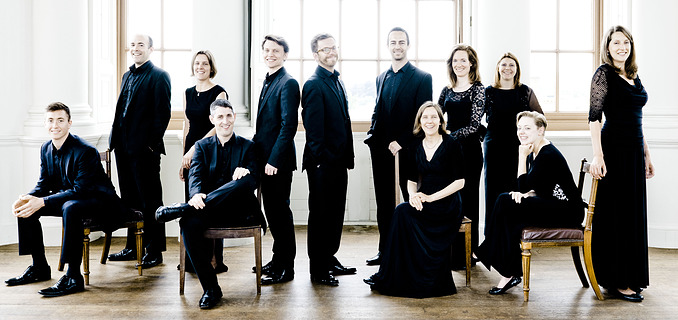Although the catalog holds several excellent recordings of Sheppard's music, most all of it is from his justifiably distinguished Latin oeuvre, and one of the felicities of this program is the inclusion of several English-texted anthems not found elsewhere. And at first listen it's clear that these works from the mid-1550s, especially the gently flowing, unostentatious five-voice polyphony of The Lord's Prayer and the full-bodied resonance and harmonic strength of Christ rising again (for four men's parts), deserve their place alongside Sheppard's more commonly-performed Latin works, such as In pace, Verbum caro, and Libera nos. The English anthem I give you a new commandment immediately recalls Tallis' beloved If ye love me, but Sheppard's piece stands apart for its richer textures, more vivid colors (including cross relations), and more extensive use of imitative counterpoint.
The (really) big work here is the antiphon Media vita - at 25 and a half minutes, one of the 16th-century's truly monumental sacred masterpieces. Vocally it requires some serious endurance - there are very few pauses - as well as superior breath control throughout long phrases and the expected attention to balances and textural/dynamic variations.
The Tallis Scholars' performance from 20 years ago (the only other first-rate recorded version) remains as vibrant and compelling as ever, its recording perspective giving more prominence to the treble than Stile Antico's equally captivating but more uniformly balanced rendition. The Tallis Scholars' version also is four minutes faster than Stile Antico's, and on direct comparison you might notice that the slower tempo enhances the inherent tension in the harmonic rhythm - a very apt reflection of the text's seeming contradiction ("In the midst of life we are in death.").
Finally, the Tallis Scholars use a performing edition prepared by David Wulstan (the manuscript's missing sections of the tenor part had to be re-composed); here, the performing editions were prepared by members of Stile Antico. Without copies of at least one of the scores it's not easy to tell the differences, although it does seem as if the Wulstan version employs more cross-relations than the current one.
The performances here are uniformly excellent, celebrating not only the richness and diversity of Sheppard's harmonic structures, but delighting in the sheer momentum of his often relentless, unceasingly unfolding lines and sometimes clashing colors. And although the textures may be rich, these singers (and recording engineer) never obscure the character of individual lines - we hear everything, and in the most agreeable acoustic we could imagine for this music.
For various reasons (clearly explained in the liner notes) most of Sheppard's works have been the victim of centuries-long neglect, but their quality and deserved standing alongside other great masters of the period, Tallis and Parsons, for instance, is without doubt. Let's hope that this will not be Stile Antico's last foray into this repertoire - but whatever the group does next, we'll be listening. Highly recommended.


 Back to List
Back to List